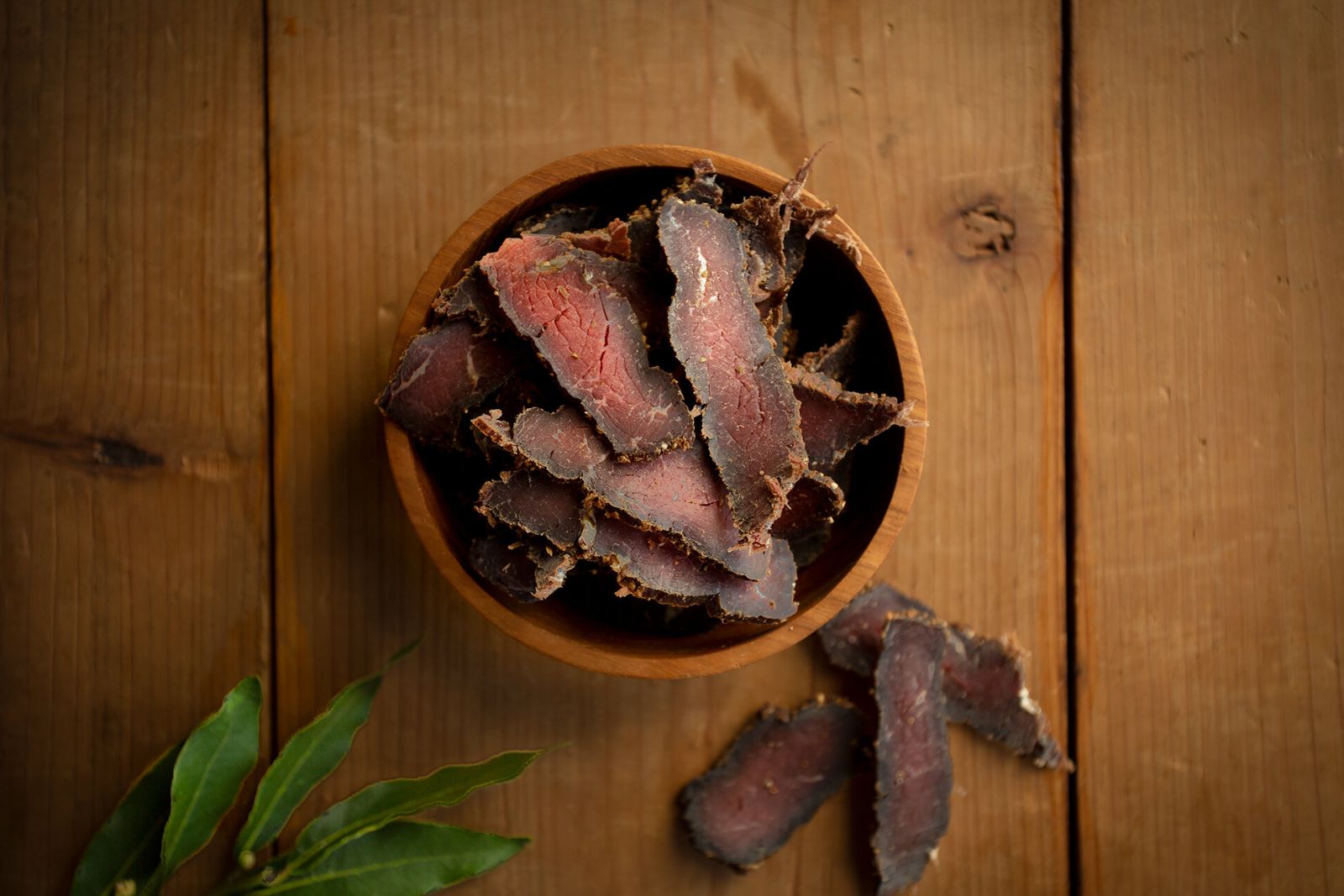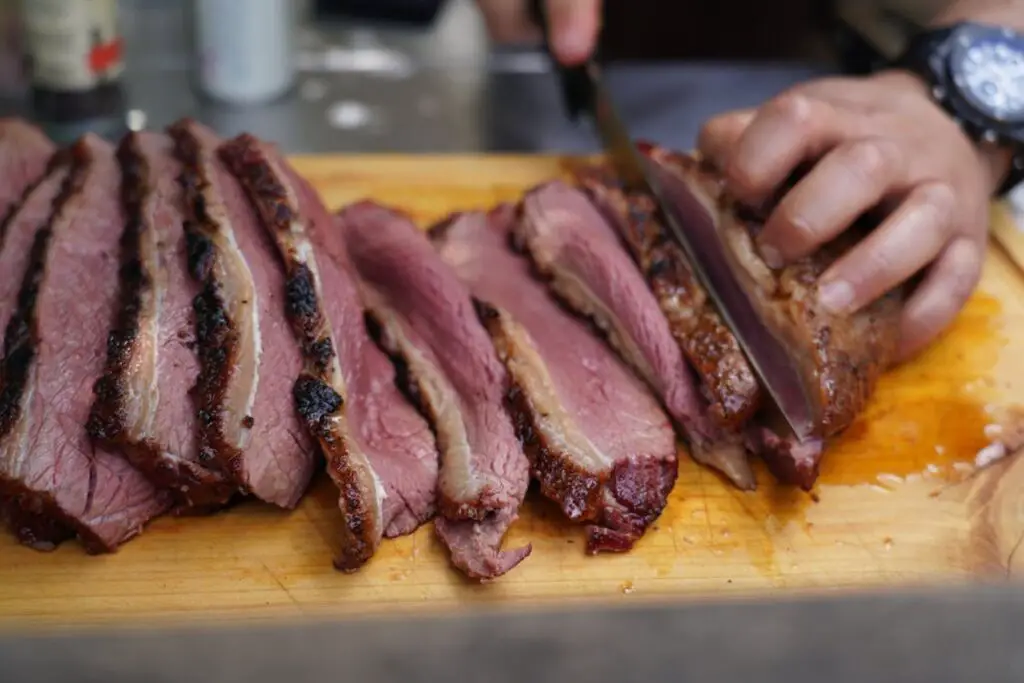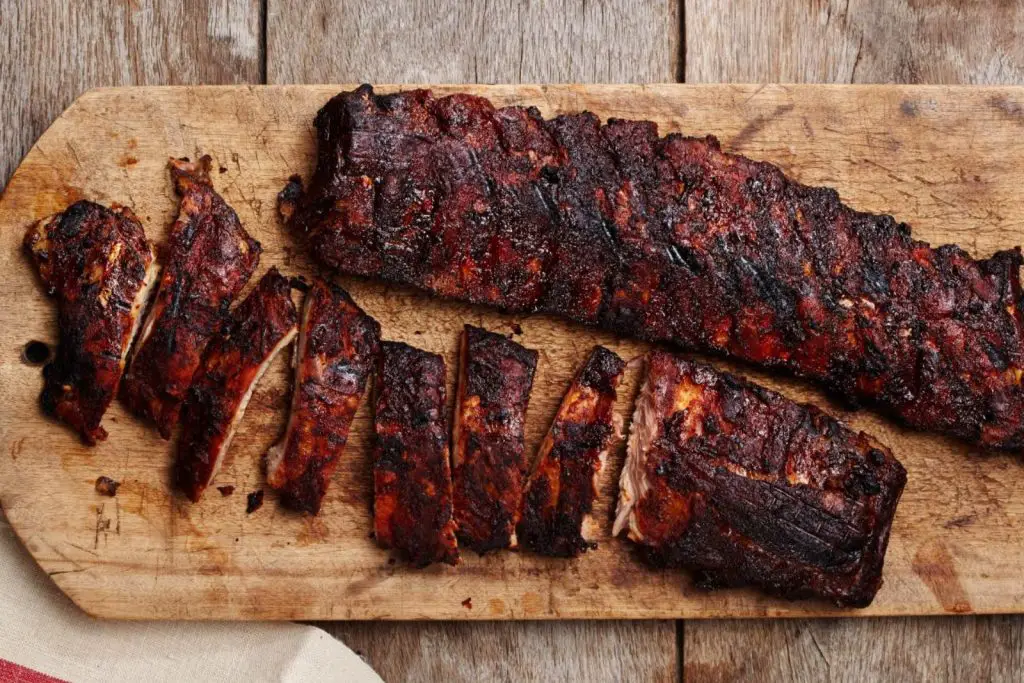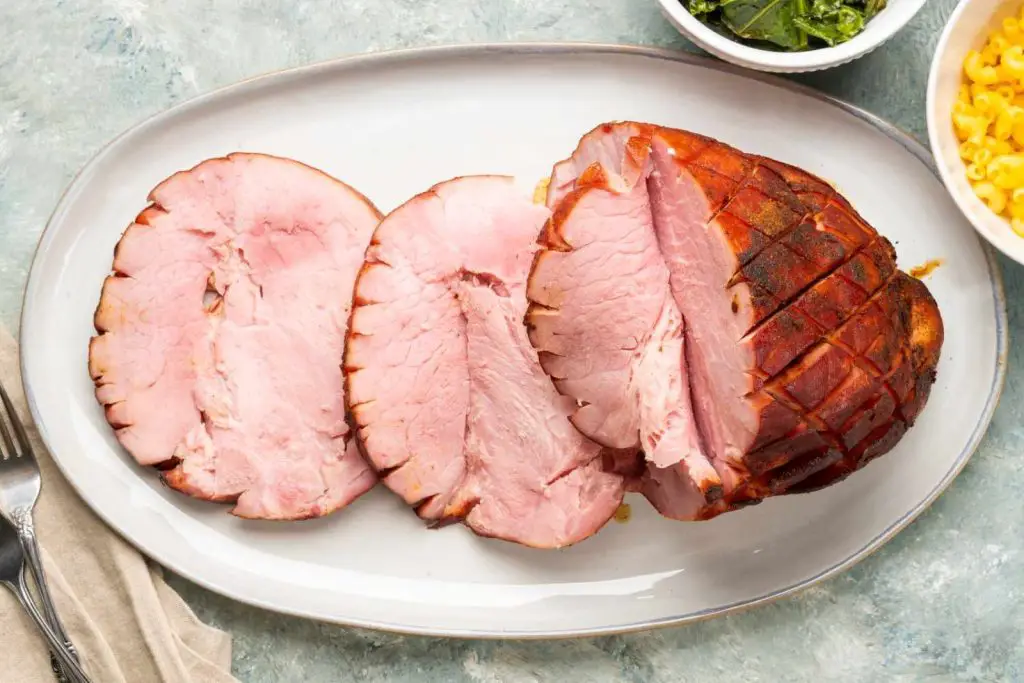
Biltong is a popular South African dried meat snack. It is typically made from thinly sliced beef or game meats that are seasoned with spices like salt, pepper, coriander, and vinegar, and then air-dried until it reaches a desired texture. Freezing biltong is a common practice to extend its shelf life, preserve its flavors, and ensure it remains fresh for a longer period.
Here are the steps to freeze biltong:
Step 1: Allow the biltong to cool down
After the process of making or purchasing biltong, it is crucial to let it cool down completely before freezing. Allowing the biltong to cool down serves multiple purposes in ensuring optimal freezing results.
Firstly, cooling down the biltong helps it retain its unique flavor and texture. During the drying process, biltong undergoes a curing stage where it is seasoned with spices and vinegar. This seasoning process imparts distinct flavors to the meat. Allowing the biltong to cool down ensures that these flavors are preserved and locked in before freezing, resulting in a more enjoyable taste experience when it is later consumed.
Secondly, cooling down the biltong helps remove any residual moisture that may be present. Moisture can contribute to bacterial growth and spoilage, even when the biltong is frozen. By leaving the biltong uncovered for a few hours or overnight, any excess moisture on the surface of the meat can evaporate, reducing the risk of spoilage and extending the shelf life of the frozen biltong.
During the cooling down process, it is essential to place the biltong in a well-ventilated area to facilitate the evaporation of moisture. You can use a clean and dry surface or a wire rack to allow air circulation around the biltong. Once the biltong has cooled down completely, it is ready for the next steps in the freezing process.
Step 2: Slice the biltong
When preparing to freeze biltong, you have the option to freeze it either as a whole piece or in smaller portions. The decision depends on your preferences and how you plan to use the biltong after it’s frozen.
If you prefer bite-sized pieces or if you anticipate using smaller portions of biltong for snacking or cooking, it is recommended to slice the biltong into thin strips. Using a sharp knife, carefully cut the biltong across the grain into desired sizes. Slicing the biltong against the grain makes it easier to chew and enhances the overall eating experience.
On the other hand, if you intend to use the biltong for specific recipes or prefer larger, intact pieces, you can freeze the entire biltong as is. This method is suitable if you plan to slice or cut the biltong into desired portions after thawing.
By slicing the biltong before freezing, you create convenience and flexibility in portion control and usage. It allows you to grab smaller amounts of biltong whenever you desire without having to thaw the entire piece. Additionally, if you plan to use biltong in recipes, having pre-sliced portions makes it easier to incorporate into dishes.
Whether you choose to slice the biltong into strips or freeze it as a whole, ensure that the slices or the entire piece are manageable in size and fit well into your freezer containers or bags.
Step 3: Wrap the biltong
After slicing the biltong into portions or deciding to freeze it as a whole, the next step is to wrap it tightly in plastic wrap. This crucial step is essential for preserving the quality of the biltong during the freezing process.
When wrapping the biltong, it is important to ensure that each portion or the entire piece is fully covered and there are no exposed areas. Wrapping the biltong tightly in plastic wrap creates a protective barrier that helps prevent freezer burn.
Freezer burn occurs when food is exposed to air and moisture in the freezer, leading to dehydration and deterioration of texture and flavor. By tightly wrapping the biltong, you create a seal that minimizes contact with air, reducing the risk of freezer burn.
Additionally, the plastic wrap acts as an extra layer of protection against contaminants or odors from other items in the freezer. It helps maintain the unique flavors and aromas of the biltong, ensuring that it retains its authentic taste even after being frozen.
When wrapping the biltong, make sure to press the plastic wrap firmly against the surface of the meat, removing any excess air trapped inside. This will further prevent freezer burn and maintain the quality of the biltong.
Step 4: Double-wrap with aluminum foil
After wrapping the biltong tightly in plastic wrap, the next step is to provide an additional layer of protection by double-wrapping it with aluminum foil. This extra step helps to safeguard the biltong from freezer burn and maintain its freshness and flavor during the freezing process.
Aluminum foil serves as a barrier against air and moisture, which are the primary culprits behind freezer burn. Freezer burn occurs when food is exposed to air, causing moisture to evaporate and leaving the surface dry and dehydrated. By double-wrapping the biltong with aluminum foil, you create an extra layer of insulation, reducing the chances of air reaching the meat and causing freezer burn.
The aluminum foil also helps to maintain the biltong’s moisture content. It acts as a barrier, preventing excess moisture from escaping and reducing the risk of the biltong becoming overly dry during freezing. This helps preserve the texture and tenderness of the biltong, ensuring a satisfying eating experience once it is thawed.
Furthermore, the double-wrapping with aluminum foil adds an extra layer of protection against odors and flavors from other items in the freezer. It helps to maintain the unique taste and aroma of the biltong, keeping it distinct and free from any unwanted influences.
When double-wrapping with aluminum foil, ensure that the biltong is completely covered and there are no gaps or exposed areas. Press the foil tightly around the biltong to create a secure and well-sealed package.
Step 5: Label and date the package
Before storing the wrapped biltong in the freezer, it is essential to label the package. This step may seem simple, but it plays a crucial role in helping you keep track of the biltong’s freezing date and any additional details that can be helpful in the future.
Labeling the package with the date of freezing allows you to easily identify the biltong’s age and ensure that it is consumed within a reasonable timeframe. This is particularly important because frozen biltong can be stored for up to three months without a significant loss in quality. By knowing the freezing date, you can prioritize consuming the older biltong first, ensuring you enjoy it while it is still at its best.
Additionally, labeling the package with the freezing date helps you avoid confusion and prevents potential waste. It allows you to maintain an organized freezer and prevent any forgotten or expired biltong from being left unused for an extended period.
Furthermore, you can include any specific details on the label that may be relevant to your preferences or dietary needs. For instance, you can note the type of meat used for the biltong or any special seasonings or marinades that were applied. This information can be helpful when selecting specific flavors or catering to dietary restrictions, ensuring you choose the desired biltong when it comes time to enjoy it.
To label the package, use a marker or a label that adheres well to the aluminum foil. Write the date clearly and legibly, making sure it is visible even when the package is stored among other items in the freezer. If desired, you can also include additional information about the biltong.
Step 6: Store in the freezer
After properly wrapping, labeling, and dating the biltong, the final step is to store it in the freezer. This step is crucial for maintaining the biltong’s quality, flavor, and longevity until you are ready to enjoy it.
When selecting a spot in the freezer to store the biltong, it is important to find a location where the temperature remains consistently cold. Ideally, the freezer temperature should be set below 0°F (-18°C) to ensure optimal preservation. Fluctuating temperatures can affect the quality of the biltong and may lead to freezer burn or spoilage.
Ensure that the biltong is placed in a position where it will not be squished or compressed by other items in the freezer. Avoid placing heavy objects on top of the biltong or storing it in a crowded area. Maintaining proper spacing and allowing airflow around the biltong will help prevent any unwanted flavors or odors from transferring.
Proper storage conditions in the freezer are crucial for preserving the biltong’s taste, texture, and overall quality. The cold temperature helps to keep the biltong frozen solid, inhibiting bacterial growth and maintaining its freshness for an extended period.
Remember to keep track of the inventory in your freezer, rotating older biltong to the front for consumption first. This way, you can enjoy your frozen biltong within the recommended storage time frame of up to three months without compromising its quality.
How long can frozen biltong be stored?
Frozen biltong can be stored for up to three months without significant loss in quality. It’s recommended to consume the biltong within this timeframe to ensure the best taste and texture. Proper storage and labeling of the package can help you keep track of the freezing date and ensure timely consumption.
Other related questions
How do I thaw frozen biltong?
To thaw frozen biltong, transfer it from the freezer to the refrigerator and allow it to thaw slowly. The biltong will gradually defrost within a few hours to overnight, depending on its size and thickness. Avoid using warm water or microwave defrosting methods, as they can impact the texture and taste of the biltong.
Can frozen biltong be rehydrated or softened before consuming?
Frozen biltong is typically consumed in its dried form and rehydrating or softening it is not a common practice. Biltong is traditionally enjoyed as a flavorful, chewy snack with a dry texture. Attempting to rehydrate or soften frozen biltong may alter its texture and compromise its original taste. It is recommended to thaw the biltong in the refrigerator and consume it as is for the best experience.
Can I refreeze biltong?
It is generally not recommended to refreeze biltong once it has been thawed. Refreezing can affect the texture, taste, and quality of the biltong, leading to a less enjoyable eating experience. It is best to consume the thawed biltong within a reasonable time frame to ensure optimal flavor and freshness.
How do I know if the biltong has gone bad after being frozen?
After being frozen, biltong can still spoil if not stored properly or kept for an extended period. Signs of biltong going bad include an off or rancid smell, mold growth, or a slimy or discolored appearance. Additionally, a significant change in texture, such as excessive dryness or sponginess, can indicate spoilage. It is crucial to discard any biltong that shows these signs to avoid consuming spoiled meat.
Are there any specific guidelines for freezing biltong made from different types of meat, such as beef or venison?
When freezing biltong made from different types of meat, such as beef or venison, there are some specific guidelines to consider. Firstly, ensure that the biltong is properly dried and cured before freezing to maintain its quality. Additionally, take note of any variations in freezing times and flavors between different meats, as they can impact the overall freezing and thawing process. Proper labeling and storage will help you keep track of the different types of biltong in your freezer.
Can I freeze biltong that has already been seasoned?
Yes, seasoned biltong can be frozen without any issues. The flavors from the seasoning will be preserved during the freezing process. Just ensure that the biltong is wrapped tightly and properly labeled before freezing.
Can I freeze homemade biltong?
Yes, you can freeze homemade biltong. The freezing process helps preserve the flavors, texture, and quality of the homemade biltong, allowing you to enjoy it at a later time. Ensure that the biltong is properly cooled, wrapped tightly, and labeled before placing it in the freezer for optimal results.
Are there any special considerations for freezing biltong made from game meats?
Freezing biltong made from game meats may require some special considerations. Game meats can have a leaner and denser texture compared to traditional beef biltong, which can affect the freezing process. It is important to ensure that the game meat biltong is properly dried before freezing to prevent excessive moisture and potential freezer burn. Additionally, due to the unique flavors of game meats, consider labeling the package with the type of game meat used for future reference.
Can I freeze biltong in vacuum-sealed bags?
Yes, you can freeze biltong in vacuum-sealed bags. Vacuum-sealing helps to remove excess air from the packaging, minimizing the risk of freezer burn and maintaining the biltong’s quality. Ensure that the biltong is properly wrapped or placed in a vacuum-sealed bag, and label it with the date before freezing to keep track of its freshness.
Can I freeze biltong that has been marinated?
Yes, you can freeze biltong that has been marinated. However, it’s important to note that the freezing process may slightly affect the texture and flavor of the marinated biltong. Make sure to properly wrap and seal the marinated biltong to prevent freezer burn and label the package with the type of marinade used for future reference.








